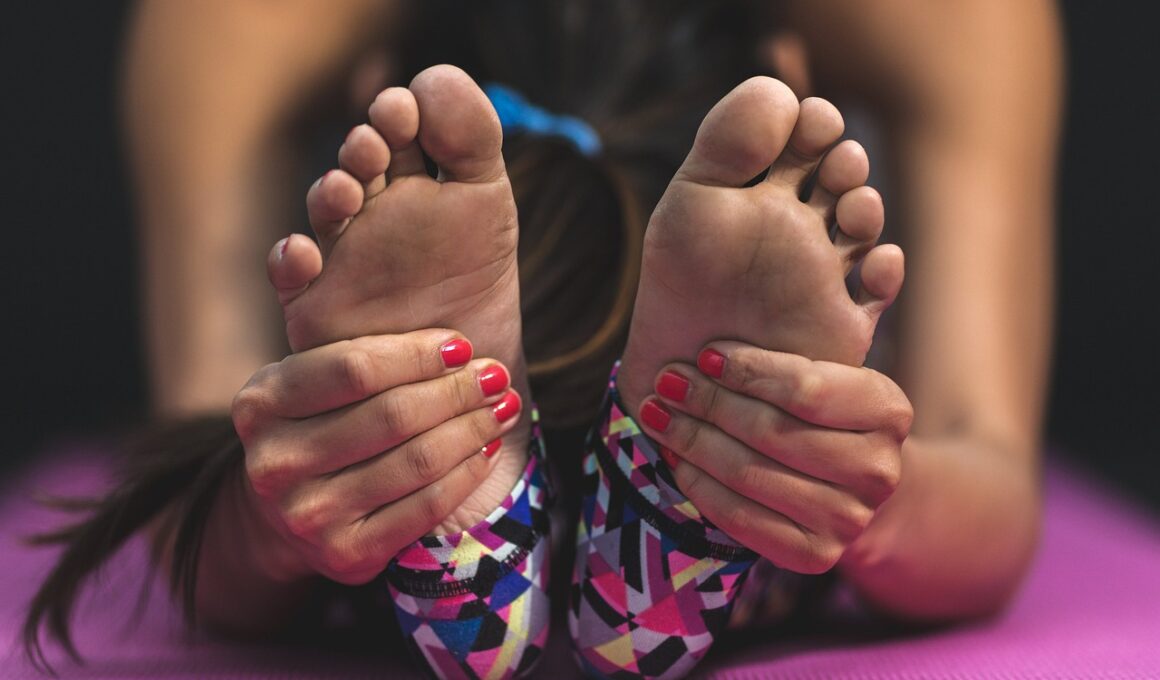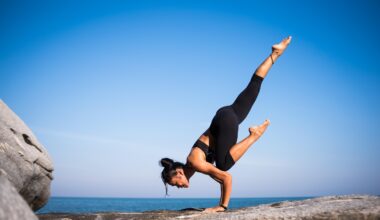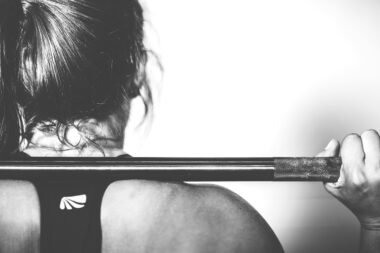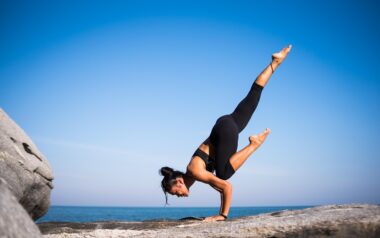Week 45 Boot Camp Flexibility and Mobility Routine
Flexibility and mobility are vital for any workout plan, especially if you’re following a boot camp routine. Incorporating flexibility exercises will help improve overall performance and prevent injuries. This week we are focusing on movements that enhance muscle elasticity, such as dynamic stretches and yoga-inspired poses. Flexibility aids in allowing a greater range of motion during exercises and contributes to better recovery post-workout. Remember, the goal of any routine is balance and variety. You want to consistently challenge your muscles while giving them space to recover adequately. Utilize foam rollers and resistance bands to assist with your flexibility exercises, providing additional support and resistance. Additionally, always make sure to warm up effectively before diving into your flexibility routine. A proper warm-up significantly reduces the risk of strains and sprains. Aim for a dedicated time for flexibility workouts within your boot camp. These sessions should last at least 15-30 minutes to yield effective results. Make it a habit that becomes part of your routine, enhancing your workout efficacy and your overall wellness journey. Explore various resources for exercise ideas that can fit into your flexibility plans.
One of the foundational exercises you can integrate into your routine is the simple yet effective dynamic stretch. This includes leg swings, arm circles, and torso twists, which can be performed in a continuous motion to warm up muscles. Start with leg swings while holding onto a wall or chair to maintain balance. Performing front-to-back swings and side-to-side swings improves hip flexibility and stability. Incorporate arm circles both forward and backward to increase shoulder mobility as well. These dynamic stretches should be performed in repetitions of 10-15 to really warm up your body before kickstarting your main workout. With torso twists, either standing or sitting, you can effectively engage your core while also warming up your spine. These exercises should take around 5-10 minutes in your warm-up routine. Remember to breathe throughout all movements, inhaling through the nose and exhaling through the mouth. These small yet essential details will enhance your flexibility training results and overall performance. As you progress through the week, feel free to modify any exercises that may not meet your needs, ensuring personal safety and comfort during sessions.
Static Stretching Techniques to Enhance Flexibility
Static stretching plays a crucial role in any flexibility routine and is particularly effective post-workout. After engaging in the main intensity training, your muscles need to relax and elongate. Begin with a basic hamstring stretch where you sit with one leg extended while the other leg is bent. Reach towards your toes and hold this position for 15-30 seconds, then switch sides. Next, to target your quadriceps, stand on one leg while pulling the other foot towards your glutes; this helps maintain balance. It’s important that you don’t bounce through the stretches but rather hold each pose, which yields better results. A calf stretch can also be beneficial, achieved by placing your hands on a wall and stepping back with one leg while keeping it straight. Observe your body’s signals and ease into each stretch, focusing on breathing to alleviate muscle tension. Remember to spend at least 20 minutes on static stretching to produce improvements in muscle flexibility. Consistent practice will lead to gradual change, ultimately enhancing your performance in subsequent workout sessions.
Breath-centered practices like yoga can efficiently improve both flexibility and mobility. Combining mindful breathing with stretching techniques allows for deeper muscle relaxation and tension release. For instance, try a simple child’s pose combined with deep breaths, holding and exhaling through the nose. Maintaining this pose for 30 seconds can help lengthen the spine while promoting relaxation. Next, consider incorporating downward-facing dog, an excellent position for strengthening arms and legs while stretching the back and legs. You can transition between various poses, holding them for 15-30 seconds while breathing deeply, which aligns with your workout philosophy. Side stretches are fantastic for improving overall trunk flexibility and can be done standing or seated. It’s vital to engage in breath-styling exercises that increase lung capacity, promoting overall fitness outcomes. Dedicate 10-15 minutes to yoga practices within your weekly workout schedule. Regularly exploring different styles of yoga can also help to keep your routine exciting and engaging. Don’t hesitate to attend a class to learn from an instructor, as they can provide adjustments and an experience that enhances your journey toward flexibility.
Foam Rolling Techniques for Muscle Recovery
Foam rolling is an essential component when it comes to enhancing flexibility and mobility. This technique acts as a form of self-myofascial release, targeting knots and muscle tension. Start by positioning the foam roller under your back while maintaining your balance. Roll back and forth slowly, allowing the pressure to ease tight areas in the muscles. Spend extra time on any sore spots, and ensure you breathe continuously throughout each movement. Gradually shift to areas such as the calves, hamstrings, and quads. Each muscle group should be treated for about one minute during the session. A great tip is to focus on areas that are frequently used during workouts, ensuring optimal recovery times. Pair foam rolling with your static stretching routine for best outcomes. Incorporating each of these techniques into your warm-up and cool-down phases of workouts will ultimately pay off in the long run by enhancing your flexibility and mobility. Once foam rolling becomes part of your regular routine, you’ll notice quicker recoveries, improved performance, and a reduced risk of injuries.
As you progress through the week and refine your routine, consider tracking your flexibility performance through fitness journals or apps. Measuring your flexibility gains not only boosts motivation but provides insights into your personal developments. Start by taking a baseline assessment using various static stretches, noting your comfort and reach in each position. After a month of consistent flexibility workouts, reassess your performance to gauge improvement clearly. Documents like these can be invaluable for keeping your workout routine engaging and productive. You can also consult with fitness professionals to assess your flexibility regularly. Engaging with instructors during classes or using online platforms can provide you with tailored feedback as you move forward. Don’t hesitate to ask for adjustments or recommendations for personalized improvements. Finally, always maintain an open mindset and stay adaptable; flexibility routines should evolve as your skills and needs do. Some days will feel easier than others, but consistency is key. Celebrate the small victories along the way, focusing on what feels right for you as you continue to strengthen your body through dedicated practice.
Conclusion: Consistency is Key
In conclusion, the Week 45 Boot Camp Flexibility and Mobility Routine emphasizes the importance of incorporating consistent flexibility and mobility sessions into your workout plan. Remember that enhancing flexibility is not a process that occurs overnight; it requires sustained effort and commitment over time. As you work through this week, adapt the techniques discussed to fit into your personal fitness journey. Celebrate your progress and be patient with yourself as you grow in both strength and flexibility. Focusing specifically on breath-work, dynamic and static stretching, as well as foam rolling, will provide a well-rounded approach to flexibility training. Pay attention to your body’s feedback, and adjust your routine accordingly, keeping it enjoyable and safe. If you encounter setbacks, reflect on them and adjust your course of action. Collectively, you will not only grow stronger but also elevate your overall health and wellness dynamic. Consider trying new classes, or workshops, or connecting with like-minded fitness enthusiasts to further enhance your routine. Commitment to flexibility and mobility training can lead to long-lasting health benefits and improved bodily function over time.
Incorporating flexibility and mobility training into your boot camp plan is the way forward. Remain dedicated and focused on the journey ahead, while keeping your end goals in mind. With diligent practice, you’ll find yourself more capable and confident in your movement, enhancing your overall performance.





